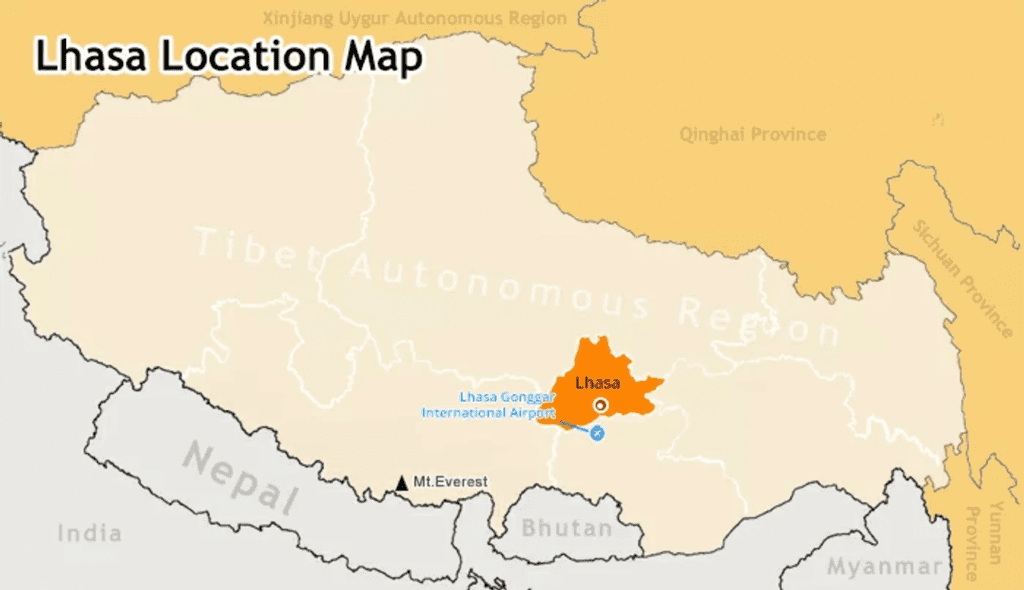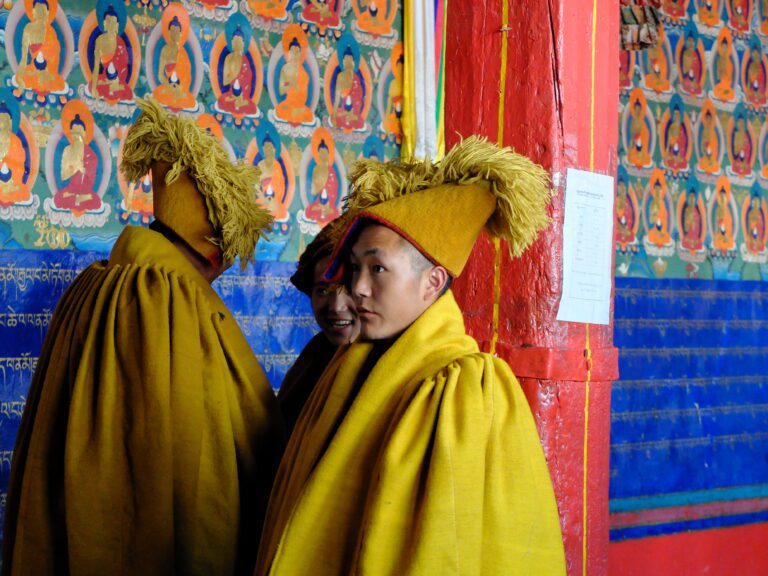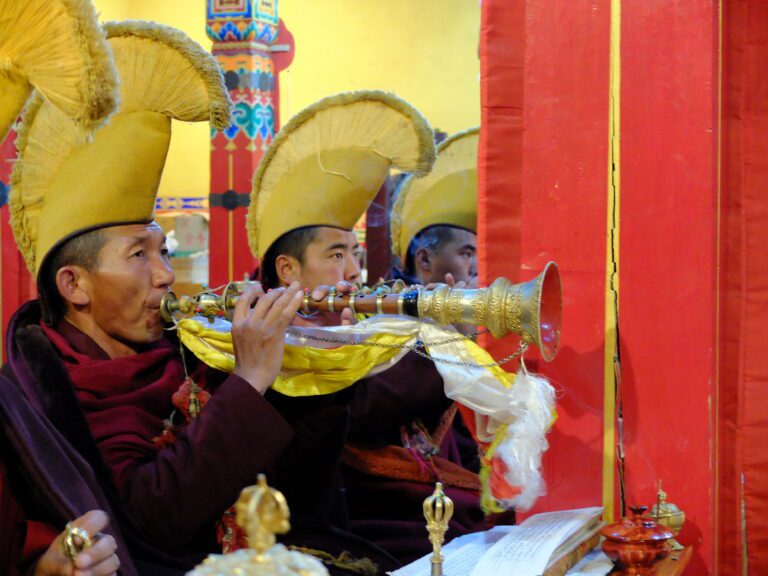Locating Tibet on a World Map
“Where is Tibet? This section will help you locate the Plateau of Tibet on a world map, so you can see where it is before you visit.”
Learn more about the geography of Tibet on Britannica.

Key Geographic Features on the Plateau of Tibet Map
-
Mountain Ranges
- Himalayan Range
- Gangdise and Nyenchen Tanglha Ranges
- Kunlun Range
- Hengduan Mountains
-
Canyons
- Three Parallel Rivers
-
Lakes
- Namtso Lake
- Yamdrok Lake, Manasarovar, Pangong Lake, and Basum Tso
-
Mt.Everest
Finding Lhasa on Your Plateau of Tibet Map
Lhasa, the capital city of Tibet, is located in the southern part of the Tibetan Plateau. It lies in a valley of the Kyi River, at an elevation of about 3,650 meters (11,975 feet). Known as the “City of Gods,”
Lhasa is the spiritual and cultural heart of Tibet, home to significant religious sites such as the Potala Palace and Jokhang Temple. It is a crucial destination for pilgrims and travelers alike, offering a blend of historical richness and natural beauty.

Must-See Sites on a Plateau of Tibet Map
- Potala Palace ( 4-Day Lhasa Holy City Tour)
- Mount Kailash (15-Day Mt. Kailash Trekking Tour)
- Namtso Lake (10-Day Lhasa, Everest, Namtso Tour)
- Yamdrok Lake (5-Day Lhasa & Yamdrok Lake Tour)
- Everest base camp (8-Day Everest Base Camp Tour)
- Jokhang Temple
- Barkhor Street
- Norbulingka

Barkhor Street: A bustling market street in Lhasa, offering a glimpse into local life and a variety of Tibetan souvenirs. Our tours ensure you have ample time to explore this vibrant area.
Norbulingka: Also in Lhasa, this palace complex served as the summer residence of the Dalai Lama and is surrounded by beautiful gardens. Visit this serene location on our 4-Day Lhasa Holy City Tour.
Mount Kailash: A sacred mountain in western Tibet, revered by multiple religions and popular for its challenging treks. This is a highlight of our 15-Day Mt. Kailash Trekking Tour, which includes the Mount Kailash Kora. Learn more about Mount Kailash on Wikipedia.
Namtso Lake: One of the highest lakes in the world, known for its stunning turquoise waters. Our 10-Day Lhasa, Everest, Namtso Tour offers an unforgettable visit to this natural wonder.
Yamdrok Lake: A freshwater lake with beautiful scenery, located near Lhasa. Experience this on our 5-Day Lhasa & Yamdrok Lake Tour.
Everest base camp: Embark on a Journey to Discover Tibet’s Natural Beauty & Cultural Heritage. 8-Day Everest Base Camp Tour
Conclusion: Embark on Your Tibet Adventure
Ready for an unforgettable adventure? The Plateau of Tibet, with its rich culture and stunning landscapes, awaits you. Whether you’re exploring the vast expanse of Tibet or diving into the vibrant life in Lhasa, a reliable map will be your best companion. Got questions or need travel tips?
We’re here to help! Let’s plan your dream trip to Tibet together. Follow us on social media for updates and inspiring stories. Book your Tibet adventure now and experience the magic of the Land of Snows!
Q: Where exactly is Tibet located?
Tibet is in southwest China, nestled in the Himalayas. It borders Nepal, India, Bhutan, and Myanmar. It is known for its high altitudes and dramatic landscapes.
Q: Why is the Plateau of Tibet called the “Roof of the World”?
The Plateau of Tibet is often referred to as the “Roof of the World” because it is the highest and largest plateau on Earth, with an average elevation of about 4,500 meters (14,800 feet).
Q: What are the main attractions to see on a map of Tibet?
Key attractions include the Potala Palace, Jokhang Temple, Barkhor Street, Norbulingka, Mount Kailash, Namtso Lake, Yamdrok Lake.
What permits do I need to travel to Tibet?
Travelers to Tibet need a Chinese visa and a Tibet Travel Permit. Additional permits may be required for certain regions within Tibet.
What is the best time of year to visit Tibet?
The best times to visit Tibet are in the spring (April to June) and autumn (September to October) when the weather is mild and stable.
How can I prepare for the high altitude in Tibet?
To prepare for Tibet’s high altitude, spend a few days in Lhasa to acclimate, stay hydrated, avoid strenuous activities initially, and consult with a doctor before your trip.
What should I pack for a trip to Tibet?
Pack warm clothing, sturdy walking shoes, sunscreen, sunglasses, a hat, and a first aid kit. Layered clothing is ideal due to varying weather conditions.







